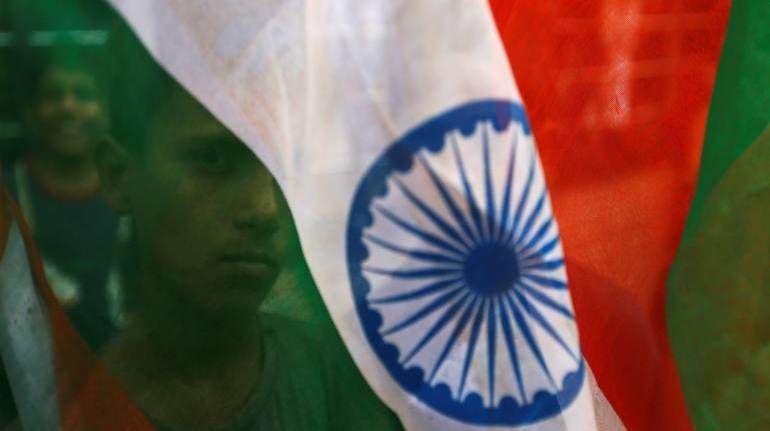



In his textbook Principles of Economics, first published in 1890, Alfred Marshall referred to the “splendid markets which the old world has offered to the products of the new”. Marshall’s words, written in the context of how trade can serve as a powerful engine of growth, have profound relevance a century later.
A country’s economic emergence is determined by trade flows, among other things. The movement of goods across countries forms the backbone of international trade. Small and medium businesses account for about half of India’s merchandise exports. This underlines the significance of the estimated 60 million micro, small and medium enterprises (MSMEs) in India’s trade universe.
Amid rapidly changing business conditions, preparing for MSMEs’ integration into the global supply chain has become a key priority. Staying ahead on the high seas of global merchandise trade will need a systematic and collaborative approach that includes policy enablement, capacity building, and private sector partnerships, all involving technological solutions on an unprecedented scale.
Why CEPAs matter
Inter-country economic cooperation agreements involve complex policymaking and reforms. The gains of such treaties may not be visible in the immediate context, but they can last for decades.
The India-UAE CEPA has opened up the gates of opportunity to connect India to the supply chain to the African continent. India and the UAE now trade USD 88 billion more than they did before the CEPA was signed in 2022, marking a rise of more than 38 percent. The two nations are looking to more than double non-oil bilateral trade to USD 100 billion by 2030. Currently, non-oil bilateral trade stands at $48 billion.
The Gulf Cooperation Council (GCC) has approached New Delhi to begin negotiations for a bilateral trade agreement on behalf of the grouping. Bahrain, Kuwait, Oman, Qatar, Saudi Arabia, and the UAE are part of the GCC. The Gulf region is a crucial strategic region with major geopolitical and economic implications. Deep cultural exchanges, historical ties, and civilisational connections exist between India and the region. Both share a colonial past and independent-struggle conflicts. India relies heavily on the GCC nations for remittances, oil, and investment.
Around 8.9 million Indians live in the Gulf region, including 2.5 million in Saudi Arabia and 3.4 million in the United Arab Emirates. The Gulf nations contribute 50% of India's yearly remittances of more than $80 billion. Over the past ten years, trade and investment between India and these West Asian nations have increased dramatically.
The India-Australia Economic Cooperation & Trade Agreement (ECTA), which came into force last year, provides for an institutional mechanism to encourage and improve trade between the two countries.
The ECTA between India and Australia covers almost all the tariff lines dealt in by India and Australia, respectively. India will benefit from preferential market access provided by Australia on 100 per cent of its tariff lines. This includes all the labour-intensive sectors of export interest to India, such as gems and jewellery, textiles, leather, footwear, furniture, food and agricultural products, engineering products, medical devices, and automobiles.
India and the United Kingdom are aiming for a Free Trade Agreement (FTA) by Diwali this year. The 12th round of talks took place on August 7. The UK is seeking a significant cut in import duties on goods such as scotch whiskey, automobiles, lamb meat, and certain confectioneries. India's main exports to the UK are readymade garments and textiles, gems and jewellery, engineering goods, petroleum and petrochemical products, transport equipment, spices, machinery and instruments, pharmaceuticals, and marine products, most of which are MSME-driven enterprises in India.
In May, negotiations for the Supply Chains (Pillar-II) Agreement, involving Australia, Brunei, Fiji, India, Indonesia, Japan, Republic of Korea, Malaysia, New Zealand, Philippines, Singapore, Thailand, Vietnam & USA, were substantially concluded during the second in-person Indo-Pacific Economic Framework (IPEF) Ministerial Meeting, which could well give an opportunity to accelerate the integration of Indian MSMEs into the global supply chain. The agreement seeks to “provide a framework to build their collective understanding of significant supply chain risks, supported by each partner’s identification and monitoring of its own critical sectors and key goods”, among other things.
There is no gainsaying the power of international trade as an engine of growth. What, however, has stood out is India’s ability to drive these trade pacts as growth multipliers, giving Indian artisans, goods makers and service providers easier barrier-free access to overseas markets.
Discover the latest Business News, Sensex, and Nifty updates. Obtain Personal Finance insights, tax queries, and expert opinions on Moneycontrol or download the Moneycontrol App to stay updated!
Find the best of Al News in one place, specially curated for you every weekend.
Stay on top of the latest tech trends and biggest startup news.